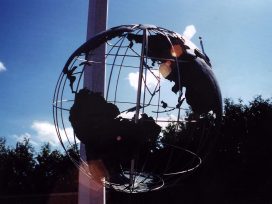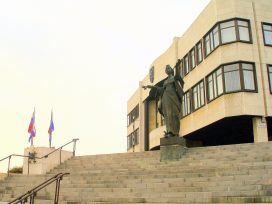Evolving or revolving? Central Europe since 1989
Nationalism, anti-liberalism and ultra-conservatism mark the political discourse in Central Europe today. What was once referred to as the ‘kidnapped West’ now seems to imitate its former captor. Jacques Rupnik seeks causes for the decline of the liberal consensus in Central Europe after 1989, following the trajectories of some of its major political thinkers.
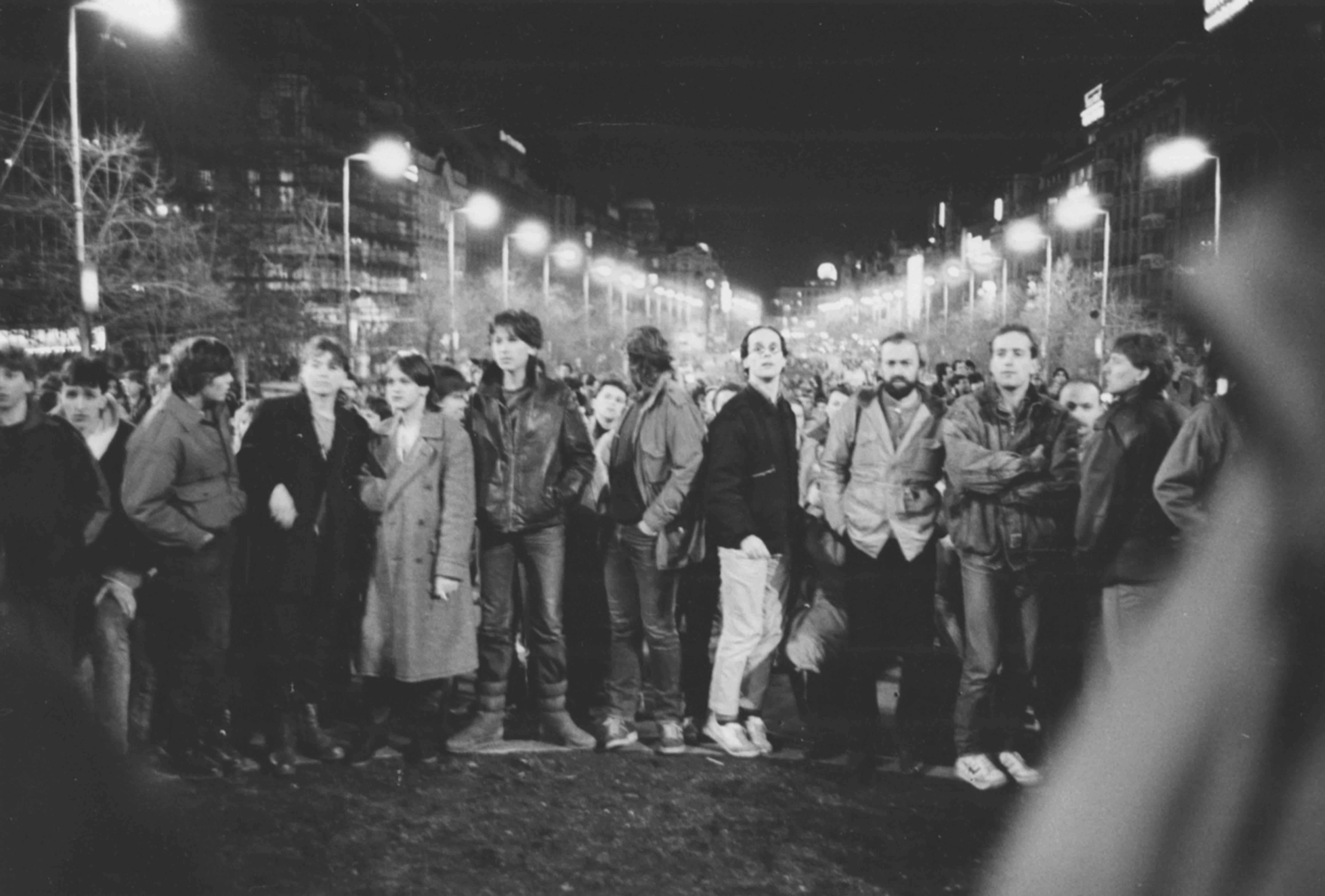
Wenceslas Square, Prague, November 1989. Photographer: Unknown
Nineteen-eighty-nine was celebrated as the return of Central Europe: a liberal-democratic revolution that restored democratic sovereignty and combined it with the language of rights and constitutionalism; a belated ‘bourgeois revolution’ without a bourgeoisie. It was also seen as proof of the resilience of a Central European culture that had outlasted the communist system from the East. If the ‘tragedy’ of post-war Central Europe was, in Milan Kundera’s words, to be ‘culturally western, politically in the east and geographically in the centre’,1 then 1989 meant the reconciliation of politics, culture and geography. Running parallel to the emergence of liberalism, which was associated with the dissident movements of the 1970s and 80s (human rights and civil society), was thus a rediscovery a Central European cultural identity as the ‘kidnapped West’. The ‘return to Europe’ of 1989 entailed the convergence of these two parallel and complementary developments: the reclamation of a western identity and a conversion to liberalism. The cultural narrative combined with the liberal narrative, the ‘Kundera moment’ with the ‘Havel moment’. A quarter of a century later, both are being challenged.
Post-war ‘Eastern Europe’, having reinvented itself as ‘Central Europe’, was eager to merge with Western Europe after 1989. The rapid post-Cold War convergence between the two formerly divided parts of Europe succeeded at the expense of the idea of Central Europe, which was dismissed as a fad. In the 2008 financial crisis, which brought about a North-South divide in the EU, Central Europe sided resolutely with Germany against the southern European countries known as ‘PIGS’. Referring to the financial crisis, the Polish foreign minister, Radek Sikorski, commented that, ‘Poland definitely belongs to Northern Europe’.2 Eastern Europe, Central Europe, Western Europe, Northern Europe: what do these terms mean today? The countries have not moved, but mental geography has played havoc with their assumed or imagined identities.
Today, Central Europe is back on the European scene, this time in illiberal and nationalist guise. However, its reappearance in western perceptions is rather different from the post-’89 return of the prodigal son. Now, Central Europe is the herald of the nationalist-populist wave that has been gaining momentum in recent years. The responses of the Visegrád group to the migrant crisis that began in 2015 have re-opened an East-West divide within the EU over the definition of national and European identity. Simultaneously, a regression of democracy in Poland and Hungary has brought to power overtly anti-liberal political forces. The contrast with the 1990s is indeed startling.
- Countries that were considered to be the ‘success story’ of the transition to liberal democracy (Hungary and Poland) now challenge the institutions of the rule of law. In Hungary, Prime Minister Viktor Orbán has made the ‘illiberal state’ part of his programme, while in Poland it is the independence of the judiciary and the constitutional court that has been curtailed by the government.3
- Central Europe, unlike the Balkans, avoided the nationalist temptation in the 1990s and developed open societies and open markets eager to join the EU. To deal with its minorities in neighbouring states, Hungary opted – ‘in the name of Europe’ – for open borders with ‘European’ standards of minority rights. The motto of the Czech presidency of the EU in 2009 was ‘Europe without barriers’. Today, the Czech president Miloš Zeman is in favour of a military presence at the country’s borders, while his predecessor, Václav Klaus, appeared as a guest speaker at the congress of the xenophobic Alternative für Deutschland.
- The Visegrád Group, formed immediately after the demise of the old order by presidents Havel, Wałęsa and Göncz, stood for democratisation, overcoming the nationalist legacies of the past, and for the shared goal of European integration. Back then, Visegrád meant orientation towards the West. Today, particularly on the migrant issue, Visegrád asserts itself in opposition to Brussels and Berlin, with Orbán and Poland’s Jarosław Kaczyński calling for a counter-revolution in Europe.
So how did we get from there to here? What are the main features of Central Europe’s illiberal turn and how are we to account for it? And what are the implications for Europe?
The illiberal turn
‘Liberal non-democracy is over. What a day! What a day! What a day!’4 These were the words of Hungarian prime minister Viktor Orbán the morning after Donald Trump’s election victory, which happened to be on the anniversary of the fall of the Berlin Wall. Brexit was a ‘knock on the door’, he said; with the election of Donald Trump as US president we have ‘crossed the threshold’. While the rest of Europe was groggy, Orbán was euphoric. ‘I feel liberated’, he said, from the constraints of the European Union and political correctness. ‘Vindicated’ may be more appropriate. Since Orbán came to power in 2010, his ‘regime change’ has been criticised by the EU as well as the Obama administration. Now, with Trump in the White House and the Brexit referendum result in the UK (‘the greatest act of defiance against the establishment since universal suffrage’5), he feels – correctly – that the tide has changed.
The spectre of populism is haunting Europe. Whether the AfD in Germany, the National Front in France, Bepe Grillo’s Movimento Cinque Stelle in Italy, the FPÖ in Austria or Geert Wilders in Holland, all are different incarnations of nativist populist political forces that are challenging liberal democracies. They are reshaping the political landscape of the member-states of the European Union and threatening the EU with paralysis or even disintegration. However, it is only in East-Central Europe that they are actually in power (with the exception of the FPÖ in Austria). The contrast is important and serves as a warning. Brexit and Trump are rapidly changing the picture and with it the dialectics between centre and periphery.
For about two decades, the countries of East-Central Europe imitated western European political and constitutional models. Whenever signs of premature ‘democracy fatigue’ appeared in one country or another, they were considered to be isolated cases and usually attributed to the legacies of the communist past. Post-1989 democratisation followed western models, which were exported through the process known as ‘EU enlargement’. Transition to democracy led to the consolidation of democracy, where all political actors accept the constitutional framework and an election is a choice of government, not a regime change. This in turn was part of the process of European integration. This three-phase pattern generated considerable academic industry under the heading of the ‘transformative power of the EU’ or ‘Europeanisation’, an inadequate term then as it is now – the nations joining had been ‘European’ long before the EU came into existence, and it is not clear who actually defines what the European model is.
With the rise of populist forces throughout Europe and particularly with the Brexit referendum (sovereignty) and Trump (nationalist xenophobia), the perspective changes. Orbán and Kaczyński have clearly understood and exploited the shift in the locus of western liberal democracy: Brexit is used in Central Europe to call for a repatriation of powers to the nation-states. Hungary will not be a ‘colony’ and it won’t ‘live according to the commands of foreign powers’. ‘Let’s Stop Brussels’ is the rallying call of the new campaign launched in Budapest in the spring of 2017. And Trump, the wall-builder, is seen as a partner by Orbán, the fence-builder.
The western anchor of the new democracies has been dislodged: deconsolidation of democracy6 goes hand in hand with the weakening and even disaggregation of the EU. Anti-liberalism and anti-Americanism used to go together. Now, the new US president provides powerful legitimation for the anti-liberal forces in East-Central Europe and beyond. ‘You were pointing fingers at us? We were the vanguard!’ This is an ironic reversal of the post-1989 paradigm and is reminiscent of a short story by Marcel Aymé about a cyclist in the Tour de France, who was lagging so far behind in the race that he found himself ahead of the peloton the following year!
The main features of the illiberal turn can be summed-up as follows:
- Departure from the rule of law as the foundation of liberal democracy as represented by European institutions in the name of the sovereignty of the people. This is a call to the ‘general will’ according to Rousseau against the separation of powers according to Montesquieu.
- The rise of nationalism and the hardening of identity politics corresponds to the shifting axes of legitimation from liberal-technocratic to populist democracy. ‘A new era of political thought has opened’, we are told by Orbán, ‘because people want democratic societies but not open societies’.7
- Culture wars. At their meeting in Krynica in October 2016, Kaczyński and Orbán called for a ‘counter-revolution’ in Europe. In the old days, before 1989, Czech and Polish dissidents would meet in the mountains at the border to discuss democratic change. Today, two former dissidents meet in the Tatra mountains and call for a revolt against liberal, permissive and decadent Europe. A language not far from Putin’s or from that of conservative Russian ideologues such as Alexander Dugin.8 Are we – in the new ‘culture wars’ – seeing a Central Europe that, once kidnapped by the East, now leans towards it?
How, then, are we to account for this reversal of the post-1989 developments? What happened to the liberal project in East-Central Europe? There are several possible hypotheses.
The decoupling of liberalism and democracy
In the early days of 1989 I was asked to introduce an evening conversation at the Institute for Human Sciences in Vienna entitled ‘After communism what?’. Cardinal Franz König and Prince Karel of Schwarzenberg were sitting in the first row, so I trod carefully. Eventually, however, I raised the unpleasant question: ‘Will the cultures that proved most resistant to communism, such as the Polish combination of nationalism and Catholicism, also be conducive or compatible with the introduction of liberal democracy?’ Conversely, I argued that the Czech tradition of secularism and Masarykian ‘social democracy’, which proved vulnerable to the post-war communist project, could offer a ‘usable tradition’ for the post-communist transition. I was wrong: 1989 brought about liberal democracies precisely in Poland or Hungary, where the post-1918 ‘transitions to democracy’ had soon drifted towards nationalist authoritarianism.9
Two developments help to account for this. First, the legacies of dissent: in their own ways, Solidarność in Poland, the Democratic Opposition in Hungary, and Charter 77 in Czechoslovakia all stood for reclaiming the language of rights, the autonomy of civil society, and the overcoming of the partition of Europe. That legacy inspired at least the initial phase of the post-89 transition. No less importantly, major intellectual and political realignments between 1968 and 1989 helped to overcome some of the old divides in the political cultures in East-Central Europe.
Polish philosopher Leszek Kołakowski published a memorable essay in the late 1970s describing himself as a ‘conservative, liberal socialist’, just to show that old labels and divides no longer applied.10 Adam Michnik wrote two influential essays in the mid 1970s that illustrated just that: ‘The Church, the Left, Dialogue’11 suggested a possible convergence on values of human dignity and human rights in opposing the communist system. The second, ‘The new evolutionism’, suggested ways to overcome or bypass the old Polish dilemma, inherited from the nineteenth century, between revolution and accommodation12 It reflected on failed past attempts at change and called for an alternative strategy: the self-organisation of civil society.
Marcin Król, the editor of Respublica, then a samizdat journal, argued for overcoming another cultural divide: that between Catholicism and liberalism (not an obvious proposition but which indeed later appeared as a successful formula in the post-1989 transition).
In Czechoslovakia, a samizdat volume was circulated in 1980 that paid tribute to Tomáš Garrigue Masaryk, the philosopher-king and founder of Czechoslovakia as a liberal democracy.13 The list of contributors read like a ‘Who’s Who’ of Czech intellectual life at the time, ranging from neo-Marxists to Christian philosophers. A point of convergence had been found upon which Václav Havel could later capitalise, stepping – so to speak – into Masaryk’s shoes.
In Hungary, the common denominator was István Bibó, the political thinker who came from the populist (Narodnik) tradition and was rediscovered by the democratic opposition. In the late 1980s, it seemed for a brief period that the old divide between ‘urbanists’ (liberals or social democrats), inspired by western models, and populists, concerned primarily with the ‘Hungarian question’ (i.e. the fate of Hungarian minorities in neighbouring countries), was being narrowed. This convergence enabled a degree of consensus necessary to lay the foundations of liberal democracy in Hungary after 1989.
Was this ‘liberal moment’ just that – a moment? How could the convergence that made liberal democracy possible lead to a de-coupling of liberalism and democracy in East-Central Europe?
One possible explanation is that these liberal alliances were made possible by the existence of a common enemy (communism) and the conveniently broad platform offered by movements such as Solidarność and Charter 77 was an ‘opportunity structure’ built on the ambiguities associated with anti-politics. With the disappearance of a common enemy and the development of political pluralism, these movements lost importance. The predictable post-89 eclipse of former dissidents from the political scene was another factor undermining political liberalism.
In Hungary, a movement of promising young 89ers advocating political, economic and societal liberalism, Viktor Orbán’s Fidesz, transformed into a party of nationalist conservatives embarked on building an ‘illiberal state’ to conquer and preserve political power. This is the case not so much of an ‘opportunity structure’ but of a structure for political opportunists who ended-up identifying with and reproducing some of the nationalist pathologies analysed by Istvan Bibó. A liberal political discourse in Hungary based on citizenship, rights and the rule of law, under Orbán shifted to a discourse stressing the need for a strong state and the protection of the nation.
However, perhaps the best illustration of the split between liberalism and democracy is provided by the trajectory of two former Polish liberals:
Marcin Król is an intellectual historian who in the 1980s founded and edited the leading liberal journal Respublica. In 2015 he published a short book entitled We Were Stupid.14 In it, he accuses former-dissident intellectuals of having been infatuated with the advocates of radical free-market reforms. The best known was Leszek Balcerowicz, the promoter of the ‘shock therapy’, who, Król says, ‘never liked the idea of social solidarity and certainly could not imagine a “solidarity” economy. He managed to fascinate intellectuals with neo-liberal concepts and ideas’. Ironically, radical free-market reforms had been introduced under the banner of a trade union called ‘Solidarity’. The ethos on which the alliance of the intellectuals and the workers had been built disintegrated and, as Król pointed out, ‘the newcomers (taking control of the economy) were completely alien to the Solidarity tradition and just as ruthless as the budding capitalists of the nineteenth century’.
In short – and this has broader relevance for the region – today’s decoupling of liberalism and democracy has a lot to do with the post-1989 confusion, and indeed collusion, between political and economic liberalism. Left intellectuals and fellow travellers after the war had been called ‘useful idiots’ in the face of ‘socialism with a Stalinist face’. Should we now consider liberal dissident intellectuals as the useful idiots of the post-1989 transition to ‘capitalism with a liberal face’?15 Did political liberals ignore the social question at their peril? Does this explain why Central Europe travelled from (economic) neo-liberalism to (political) illiberalism?
The second trajectory is no less revealing. Ryszard Legutko, also a liberal in 1989, recently published a book entitled The Demon in Democracy: Totalitarian Temptations in Free Societies.16 What is this ‘demon in democracy’, and what are the ‘totalitarian temptations’? The temptation of liberalism replaced the temptation of communism, Legutko claims: liberals merely substituted race, gender and sexual orientation for the communist obsession with class. Yet the aim remains the same – the dissolution of traditional family values and institutions such as the church and the nation. For Legutko, it is not the ‘social question’ (as for Król) but the ‘societal questions’ that matter. Legutko, a PiS member of the European Parliament, accuses the EU of promoting a liberal-left agenda of feminism, LGBT and multiculturalism, an agenda that should be resisted.
Beyond these two revealing departures from liberalism, there is a growing body of conservative critique of the post-1989 liberals in Central Europe today. A good illustration is a Polish anthology containing essays by Zdzisław Krasnodębski, Marek Cichocki, Bronisław Wildstein and Dariusz Gawin which tend to focus on three main failings or blind spots in the liberal era.17 First, the exclusion of memory in the name of the ‘end of history’ (the liberal substitute for the Marxist version of the same) and the failure to come to terms with the communist past, which is seen as an obstacle to modernisation (a critique of Mazowiecki’s ‘thick line’ policy of 1990). Second, the promotion of liberal individualism, the inflation of rights at the expense of the collective dimension of identity (the nation). Third, the liberal reluctance to consider the state as the sovereign subject of domestic and international affairs in the name of delusions about global governance.
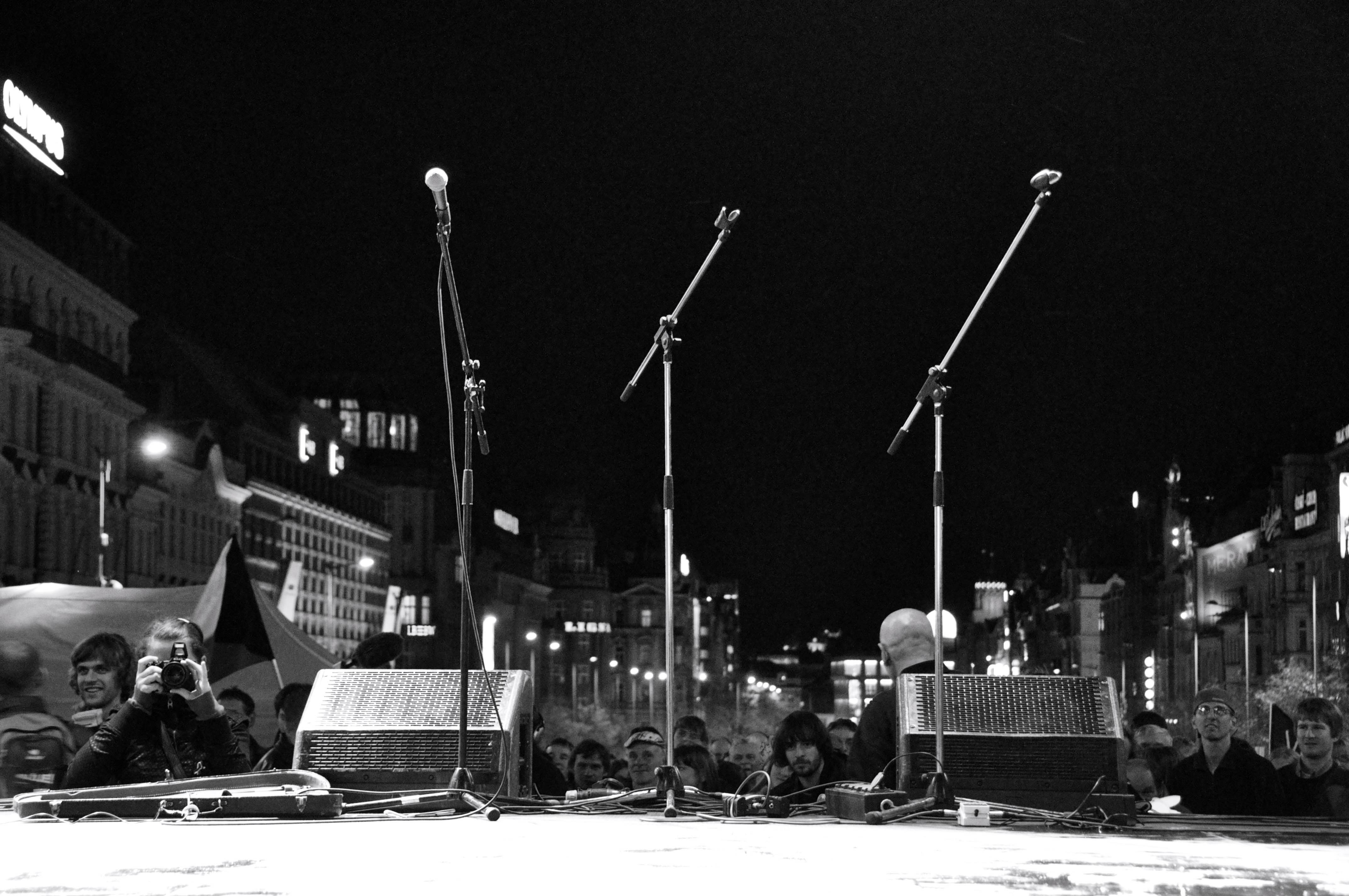
An empty platform at the 20th anniversary of the Velvet Revolution in Prague, November 2009.
Photo: Pavel Matejicek. Source: Flickr
The exhaustion of the liberal cycle
The return of Central Europe in illiberal guise has revived perceptions of an East–West divide in Europe and even questions about the wisdom or viability of the EU’s eastern enlargement. This misreads the problem and therefore possible responses to it. To be sure, there are specific features of the populist backlash in East–Central Europe, with its distinct political cultures and post-89 legacies. Yet the crisis of liberalism today and the rise of a variety of populist nationalisms is a trans-European, indeed a transatlantic phenomenon. Trump and Putin converge in their contempt for a decadent and declining Europe. The former thrives on insurgent populism, the latter prefers to manipulate it from afar. The decline of Europe’s influence and the rise of authoritarian capitalism in China, Russia and Turkey have changed the international environment in a direction unfavourable to liberal ideas about an open society.
The post-1989 liberal cycle has been exhausted. In East–Central Europe, it meant a triple transition to democracy, to a market economy, and to Europe. All three were achieved with the accession to the EU more than a decade ago. Yet all three are in crisis:18 Democratic institutions built over two decades now face illiberal regression. Integration into the western market economy was completed just before the global financial crisis of 2008. Accession to the European Union in 2004 was celebrated as the ‘unification’ of Europe; however, shortly afterwards it was discovered that Europe was divided and that the pursuit of European integration itself was under threat. The demise of future-oriented political projects gave way to ad hoc responses and the tyranny of immediacy (markets and media), while politics were replaced by policies and the language of rights. Europe, the last utopia, became the victim of this shift. Liberal elites throughout Europe – and not just in East-Central Europe – are in decline, because they failed to reformulate the project to make it relevant in the age of globalisation. Their demise, together with that of the mainstream parties, has created a new space for identity politics and anti-European populist movements. After more than two decades of liberalism ‘without borders’, border protection, communalism and nationalism are back. Instead of ‘global civil society’ (Mary Kaldor) we have global rise of populist nationalisms.19
There may be a different, perhaps complementary, way of understanding this end of an era in light of what Michael Walzer calls the ‘liberation paradox’.20 Examining the cases of Algeria, India and Israel, Walzer shows how the legacy of secular, national liberation movements have been challenged by a religious backlash: modernising nation-state builders have been replaced by religious conservatives. A somewhat similar pattern holds for East–Central Europe: after quarter of a century of the Great Transformation, we are witnessing a conservative backlash against the liberal, modernising, pro-European elites.
Beyond critical reflections on liberal political cycles looms a more pessimistic question as to whether the current populist politics and culture wars also mark the end not just of the post-1989 era, but of a two-century long cycle that started with the Enlightenment and is associated with the liberal (or socialist) idea of progress. Can these radical populist movements be seen as a political umbrella for deeper undercurrents both conservative and outright reactionary in the age of de-Enlightenment?21
Poland is not yet lost
The medium-term outcome of the political confrontation between liberals and populists, – between adepts of an open society versus adepts of a politics of closure – will largely depend on the capacity to bridge the disconnect between liberalism and democracy, which implies restoring the distinction between political and economic liberalism. If, as we have suggested, the exhaustion of the liberal cycle is a trans-European one, then Europe is the obvious forum where these dilemmas can receive an answer. National opt-outs (Brexit) are not on the table for the countries of Central Europe. As the Dutch and French elections of 2017 have shown, there is nothing irresistible about the populist tide in either the old or the new member-states of the EU, and political cycles do not imply the demise of institutions, which have a resilience of their own. A parallel is frequently made with the inter-war period. Yet the comparison with the 1920s and 30s can be misleading. There is no alternative totalitarian ideology readily available and contemporary nationalist populists are not a new version of fascism.
Finally, the great unknown about the current rollback of liberal democracy in East-Central Europe concerns societies, public spheres and citizens. To what extent have these, during the successful transition to democracy, built up a sufficient ‘democratic buffer’ to resist the authoritarian temptation? It is – as in the old days – difficult to know whether the Polish case represents an exception or a model; however, the way Polish society responded to a series of illiberal moves by the PiS government suggests that subservience seems unlikely: from KOR to KOD there is a tradition in Poland of defying authoritarianism.22 While voicing discontent appears to be the Polish response today, exiting the country seems an option for many young Hungarians. Orbán and Kaczyński overtly defy the EU, yet the citizens of Hungary and Poland remain overwhelmingly in favour of membership. It seems more likely that Central Europe’s regression from liberal democracy can be contained. Only, however, if Europe as a whole draws the right conclusions from its example.
This article is based on a presentation to the CEU President’s Seminar European Divides: ‘Crisis of Democracy, Nationhood, Multiculturalism’, at the Central European University, Budapest, 30 March 2017.
Milan Kundera, ‘Un occident kidnappé ou la tragédie de l’Europe centrale’, Le Débat, 27 (1983).
Radek Sikorski, speaking at Harvard University in February 2011.
Cf. ‘Prime Minister Viktor Orbán’s Speech at the 25th Bálványos Summer Free University and Student Camp’, 26 July 2014 (www.kormany.hu/en/the-prime-minister/the-prime-minister-s-speeches/prime-minister-viktor-orban-s-speech-at-the-25th-balvanyos-summer-free-university-and-student-camp) where he said that ‘a democracy does not necessarily have to be liberal. Just because a state is not liberal, it can still be a democracy. … in this sense, the new state that we are constructing in Hungary is an illiberal state, a non-liberal state.’
‘Viktor Orbán interview: Full transcript’ by Peter Foster in London’s Daily Telegraph, 11 November 2016. Czech President Miloš Zeman, in his letter of congratulation to the newly-elected US president, proudly claimed: ‘In my country I am known as the Czech Trump’. After supporting Brexit, his predecessor, Václav Klaus, saw Trump in the White House as the victory of ‘the common sense of ordinary people’. Havel must be turning in his grave.
Fraser Nelson and James Forsyth, ‘How Theresa May can seize the Brexit revolution’, in The Spectator 9 July 2016.
Cf. Roberto Stefan Foa and Yascha Mounk, ‘The Signs of Deconsolidation’, Journal of Democracy, vol. 28, January 2017.
Orbán’s speech of 28 January 2017, quoted in Le Monde, 30 January 2017.
For an analysis of how Dugin adapts some of Heidegger’s concepts for his nationalist and radical critique of the West, see Jeff Love and Michael Meng, ‘Heidegger and Post-Colonial Fascism’, Nationalities Papers, Volume 45, 2017.
For a comparative survey, see Antony Polonsky, Little Dictators : History of Eastern Europe Since 1918, London 1975.
Leszek Kołakowski, ‘How to be a Conservative–Liberal–Socialist’, Encounter, October 1978, 46–49.
Adam Michnik, Kosciol, Lewica, Dialog, Paris: Kultura 1977.
Adam Michnik, ‘The New Evolutionism 1986,’ in idem., Letters from Prison and Other Essays, trans. Maya Latynski, Berkeley: University of California Press 1985.
Milan Machovec, Petr Pithart, Josef Dubský, T. G. Masaryk a naše současnost (TGM our contemporary), Masarykův sborník VII, Praha: Edice Petlice 1980.
Marcin Krol, Bylismy glupi, Warsaw 2015.
In the Czech case, the distinction remained on a symbolic and political level in the 1990s, with president Václav Havel representing political liberalism and his main political opponent, the prime minister Václav Klaus, a strident advocate of economic liberalism. Like Margaret Thatcher, Klaus believed there was ‘no such thing as society’ and scorned ‘human rightism’ (two phrases he introduced into the Czech language).
Ryszard Legutko, The Demon in Democracy: Totalitarian temptations in Free Societies, Encounter Books 2016 (original Polish edition: Triumf czlowieka pospolitego, Poznań 2012); www.encounterbooks.com/books/the-demon-in-democracy-totalitarian-temptations-in-free-societies/.
Maciej Ruczaj (ed.), Pravym okem : Anthologie polskeho politickeho mysleni, Prague: Centrum pro studium demokracie a kultury 2010.
On the 20th anniversary of 1989 I described the exhaustion of the ‘triple cycle’ of post-1989 liberalism in an article entitled, ‘In search of a new model’, Journal of Democracy, January 2010, 104–112. German version: ‘Die postkommunistischen Länder auf der Suche nach einem neuen Modell’, Transit 40 (Zeitalter der Ungewissheit), 2010.
We are familiar with the cohort of Orbán, Kaczyński, Fico and their soulmates in Western Europe: Farage, Wilders, Le Pen. However the phenomenon is global: from Trump and Erdoğan to Modi in India or Duterte in the Philippines.
Michael Walzer, The Liberation Paradox, Secular Revolutions and Religious Counter-Revolutions, New Haven: Yale University Press 2016.
An important distinction that Mark Lilla revisits in his recent book The Shipwrecked Mind, New York 2016.
KOR, the Committee to Defend Workers, was created in 1976; KOD, the Committee to Defend Democracy, was created exactly forty years later.
Published 15 December 2017
Original in English
First published by Transit 50 (2017) (German version); Eurozine (English version)
Contributed by Transit © Jacques Rupnik / Transit / Eurozine
PDF/PRINTPublished in
In collaboration with
Newsletter
Subscribe to know what’s worth thinking about.
Related Articles
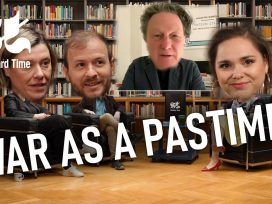
TikTok populism
A Europe Day special
Young voters are getting more engaged in European politics, but this growth starts from a very low point. Radicalization is increasing, and most people connect with politics emotionally and through communities. The EU holds vast power and potential, but how can it engage young people ? Standard Time’s Europe Day episode premiering today at 5 PM CET.

Georgia’s ‘March for Europe’ protests express deep polarization in the country over the current government’s pro-Russian course. The return of Moscow-friendly oligarch Bidzina Ivanishvili to official politics signalled the beginning of an election campaign whose outcome will decide Georgia’s democratic future.



